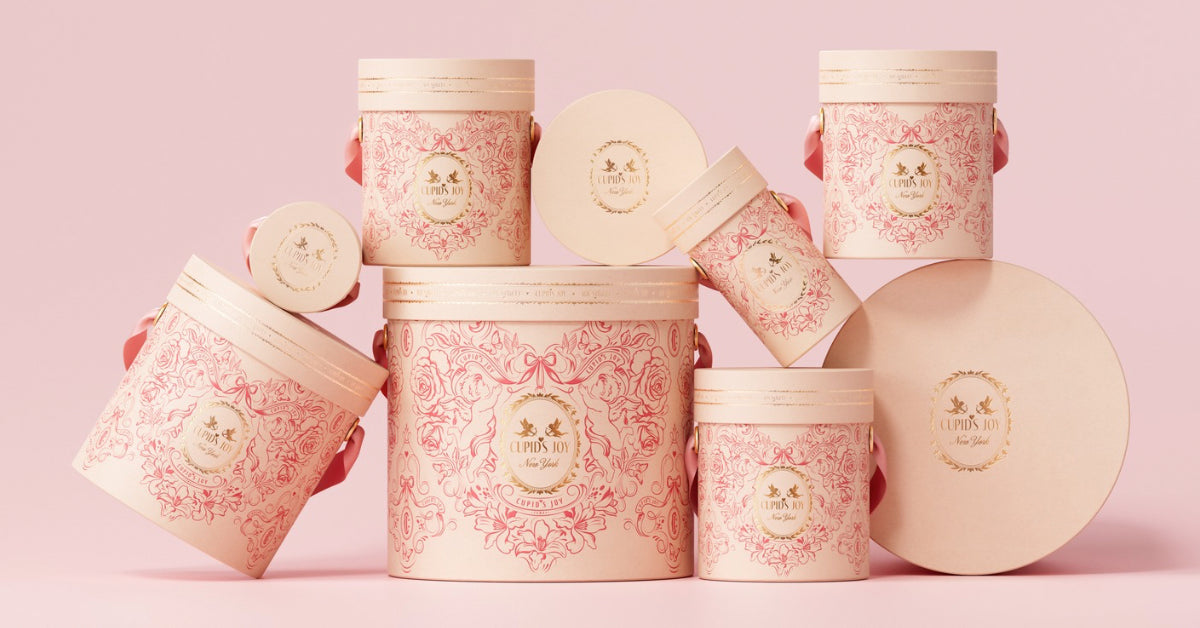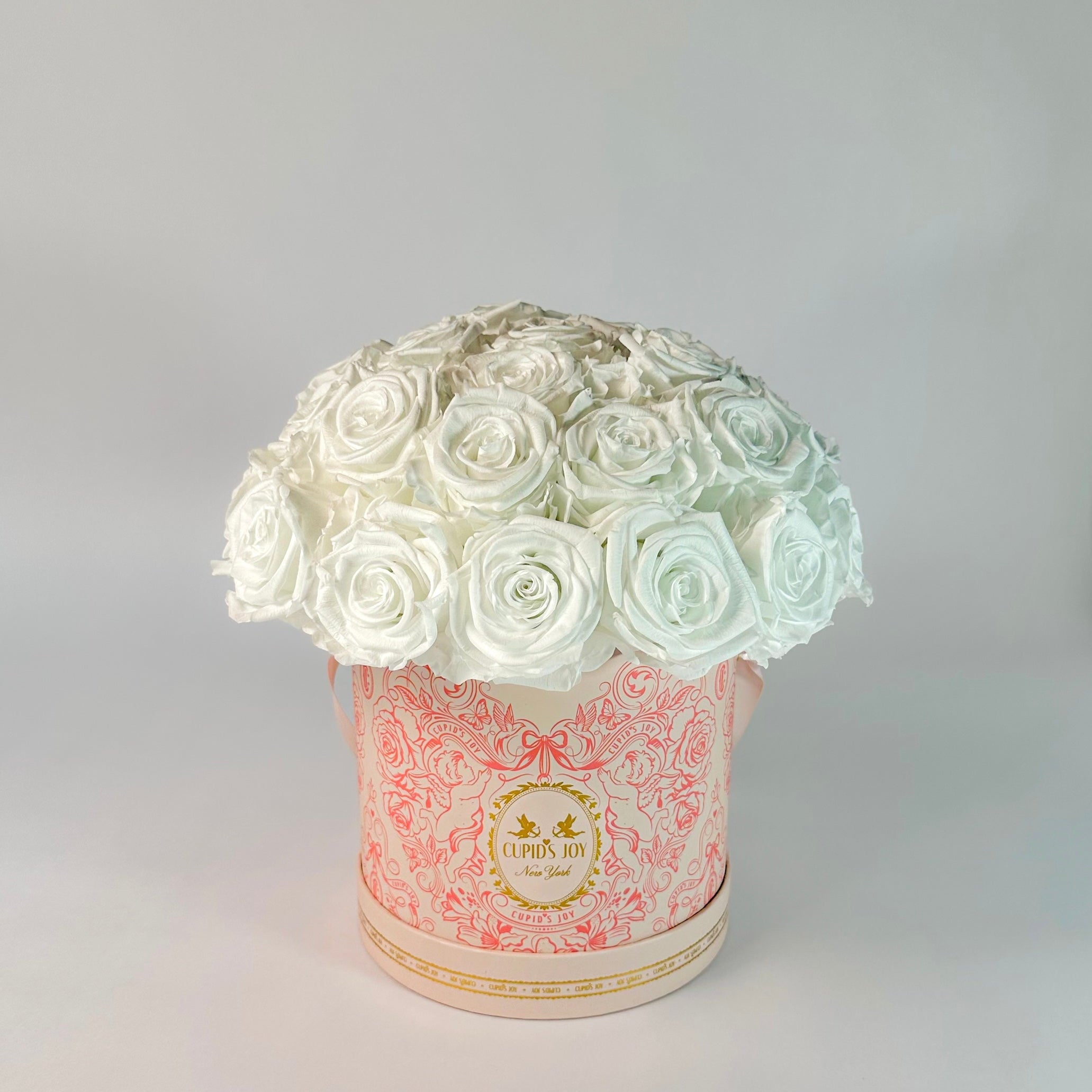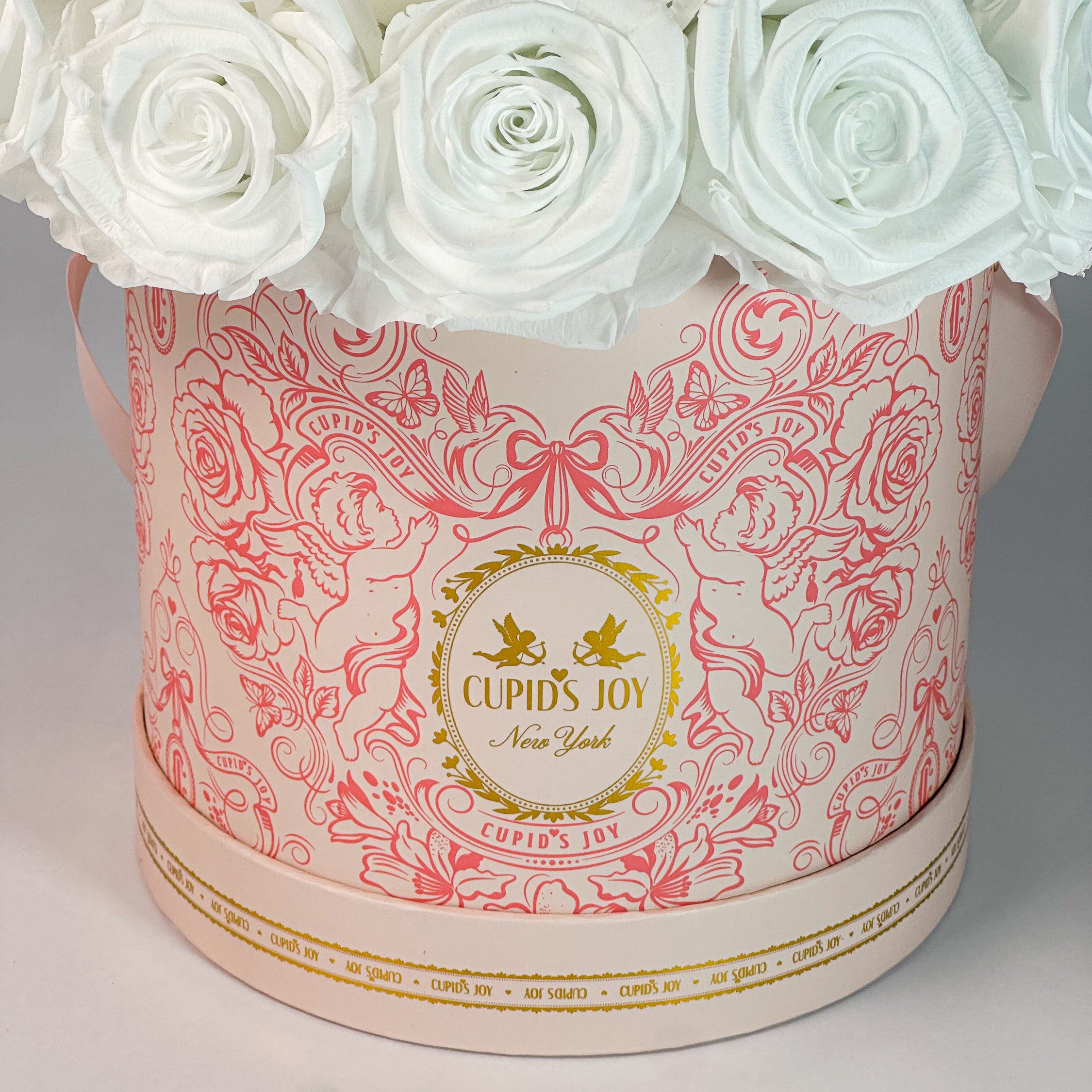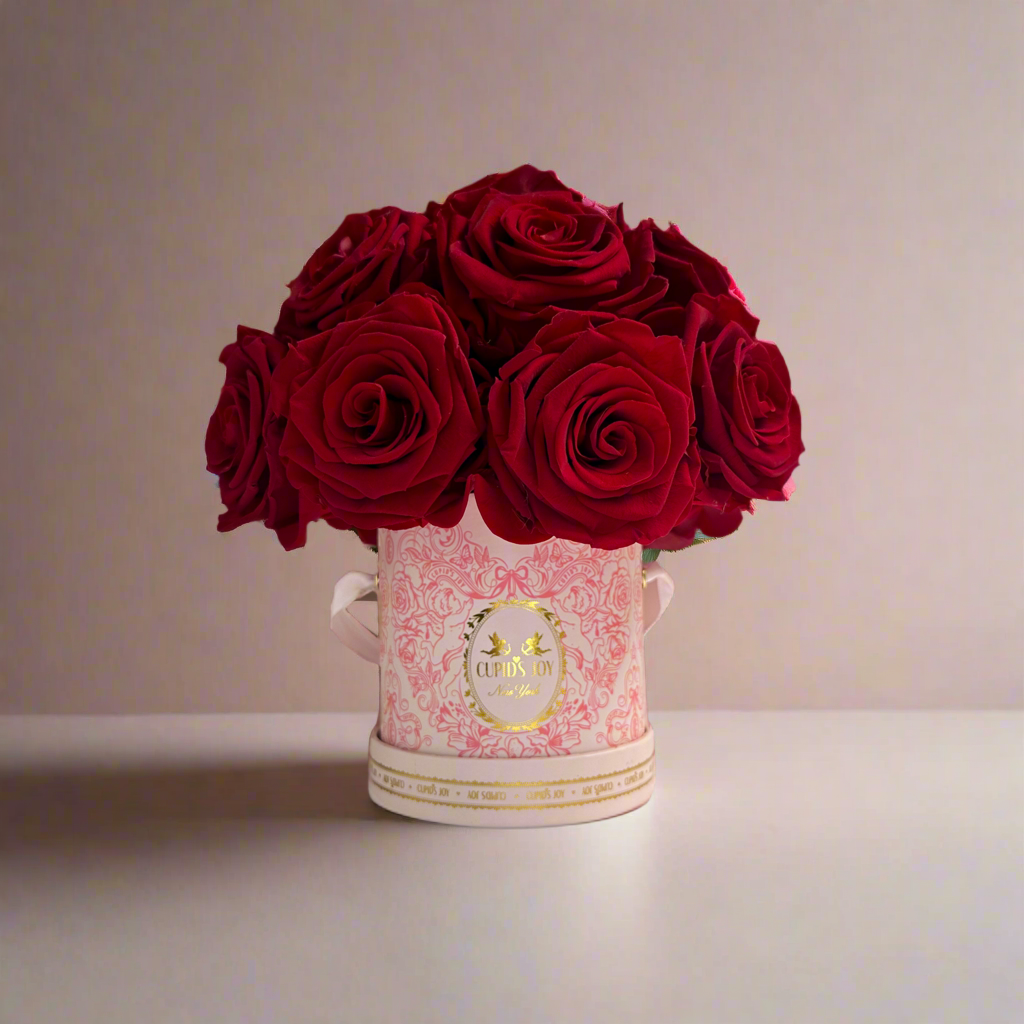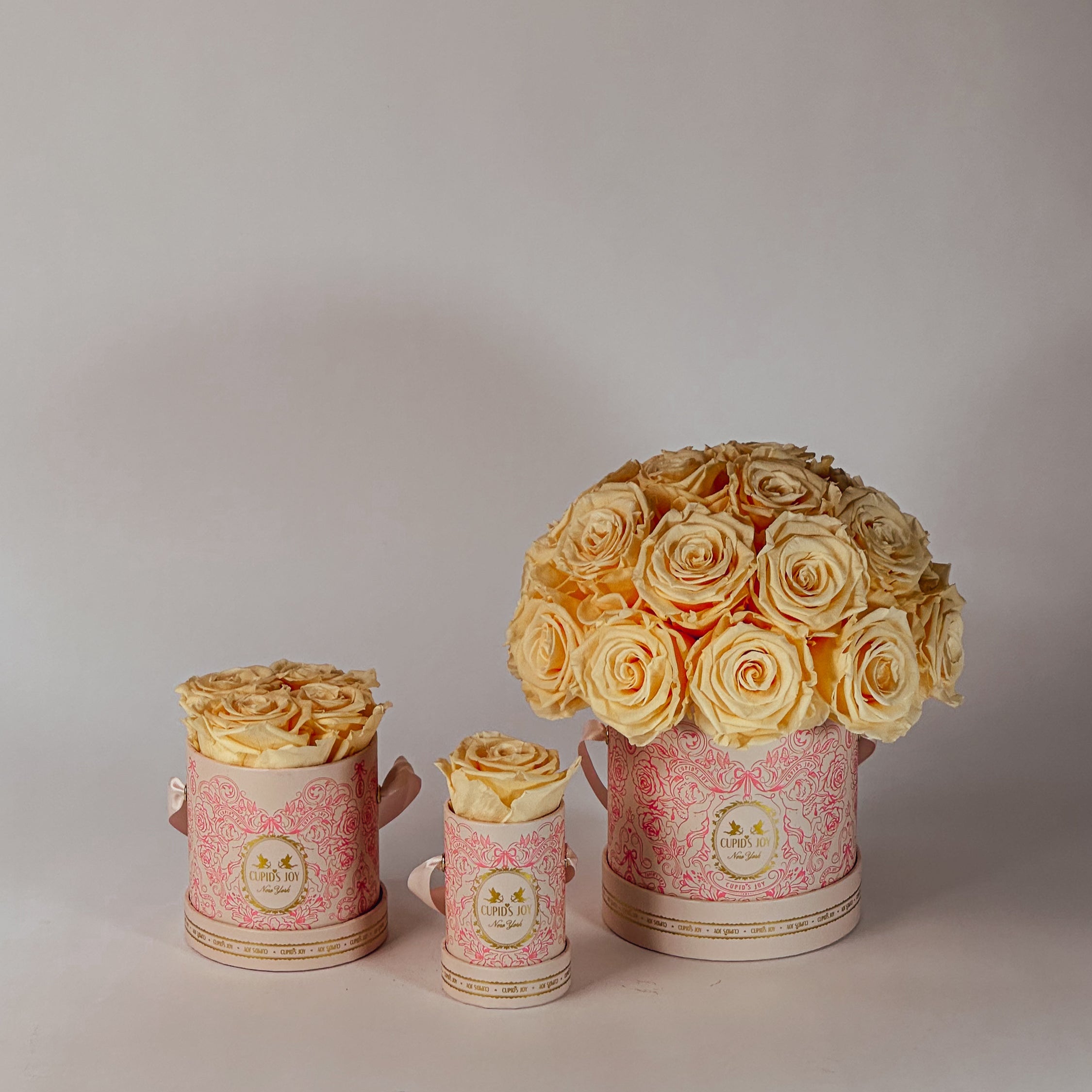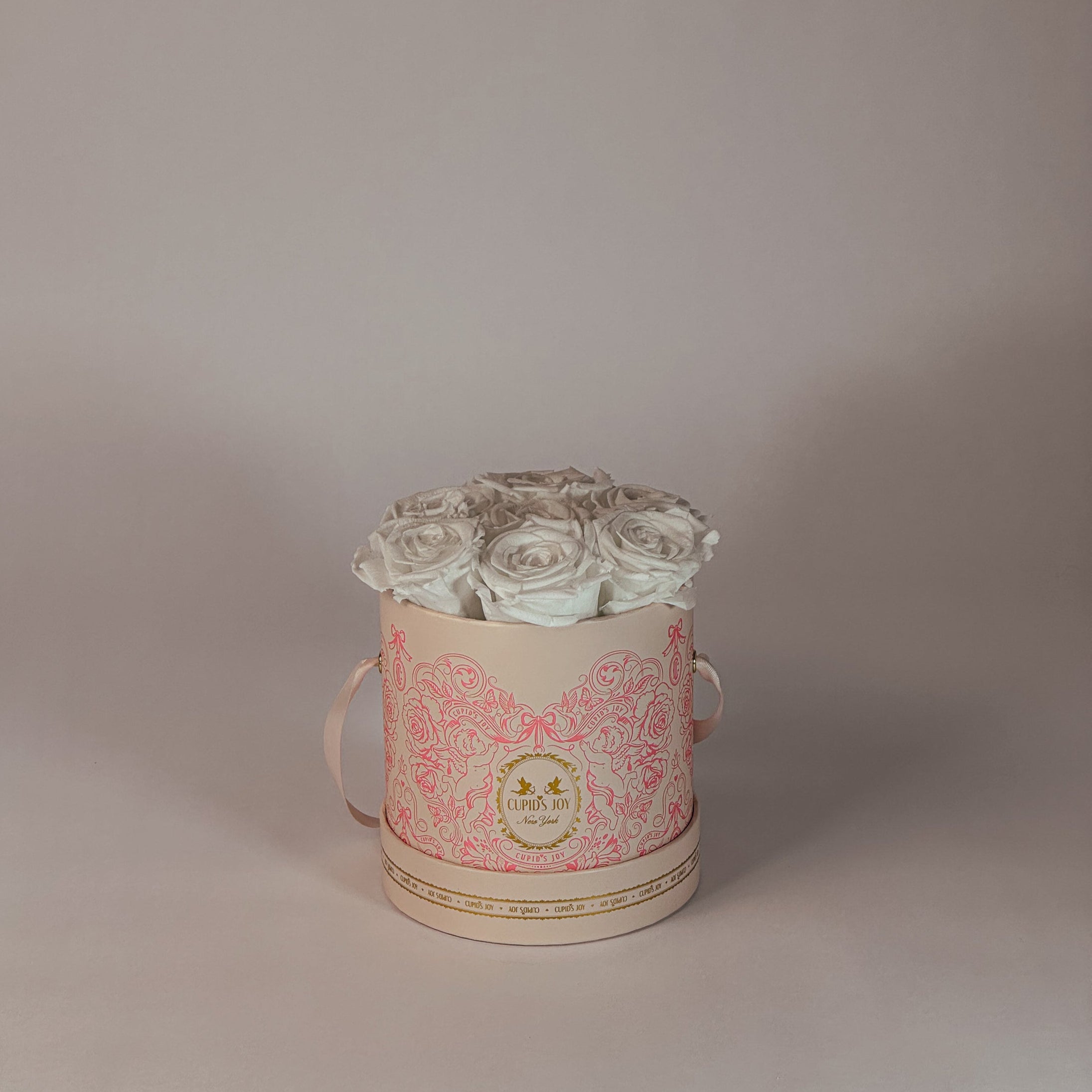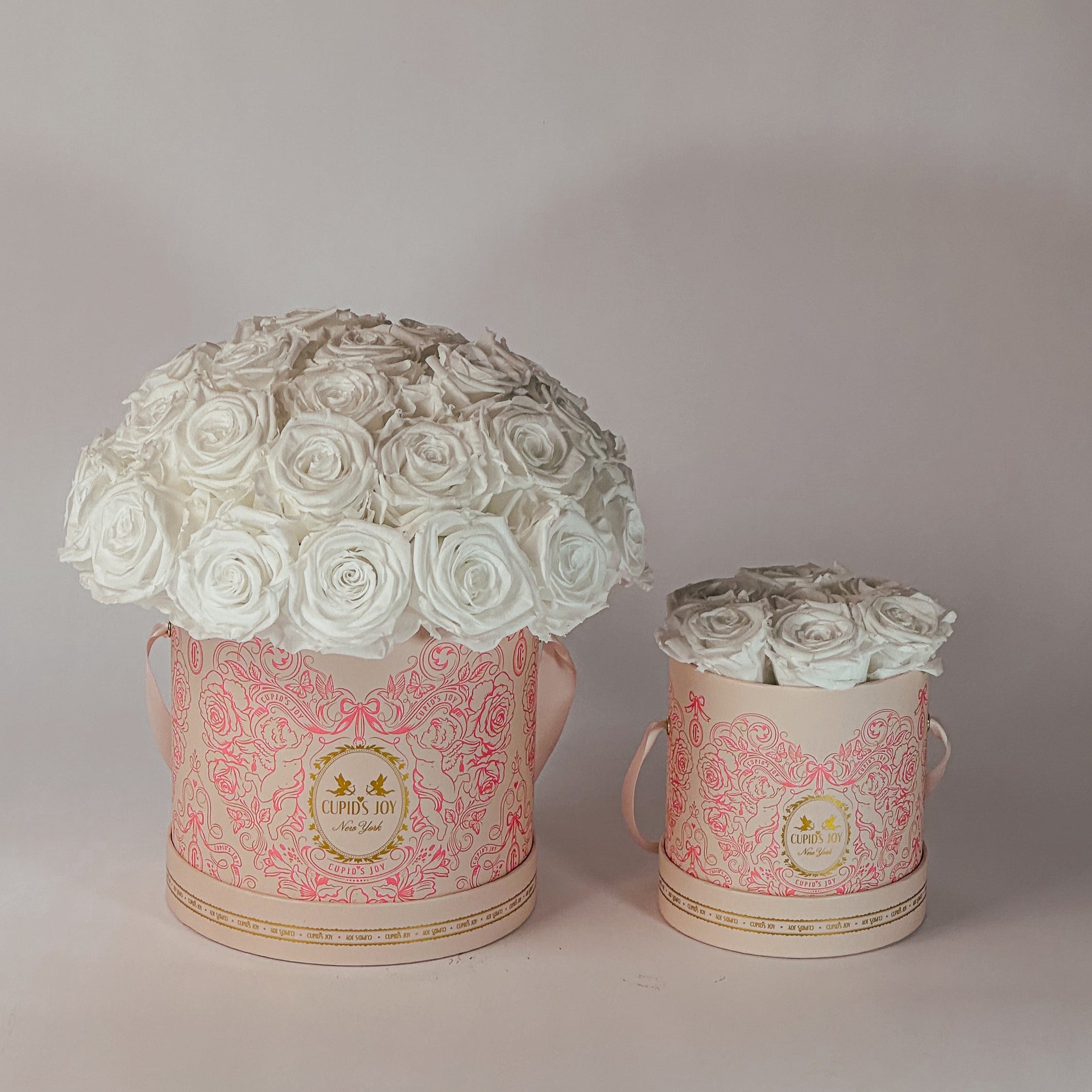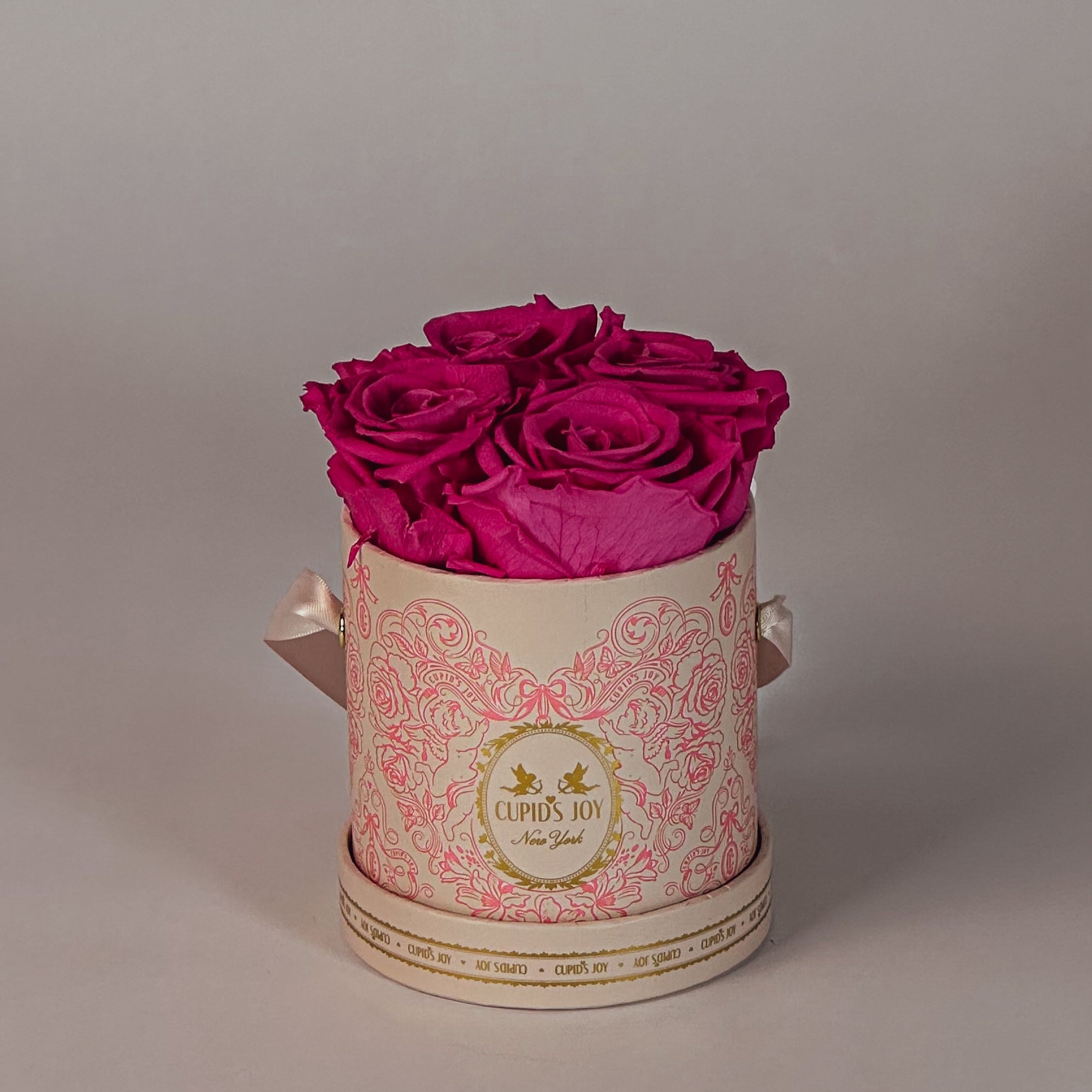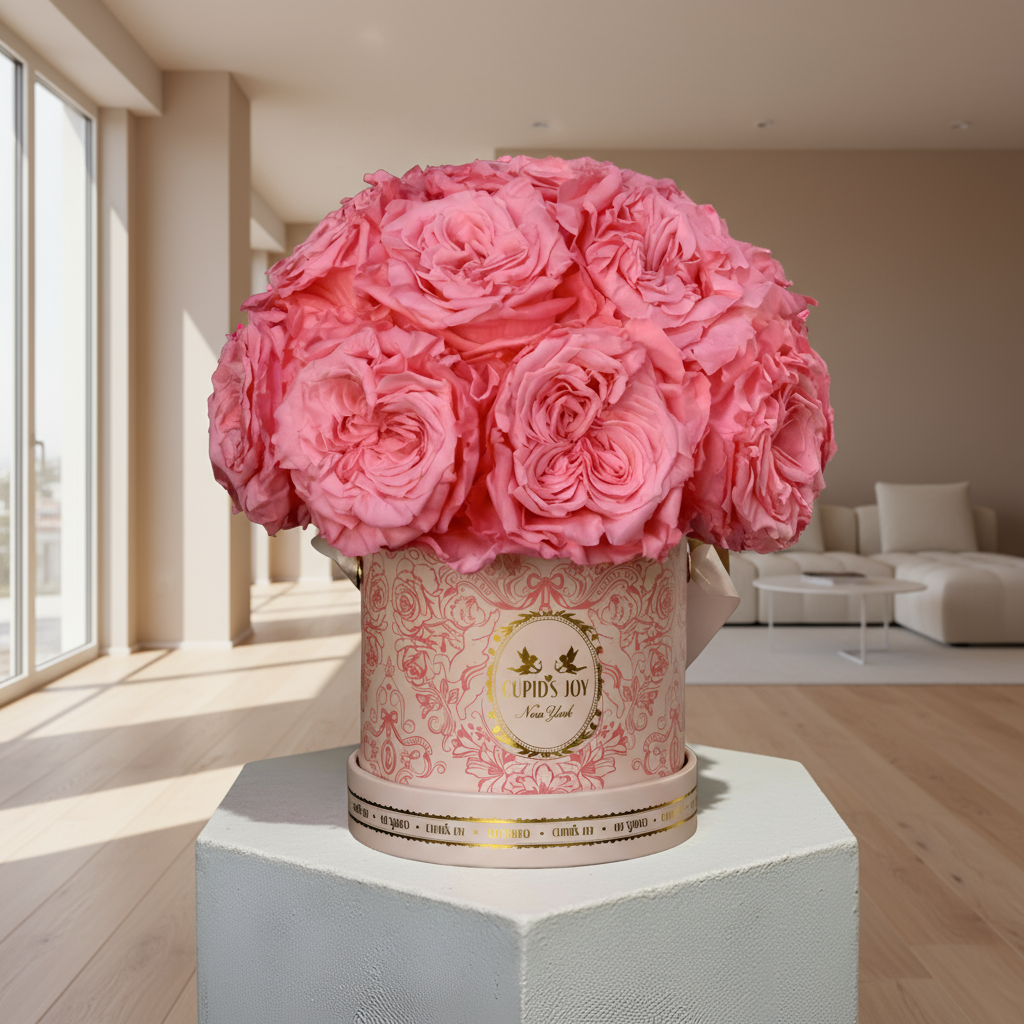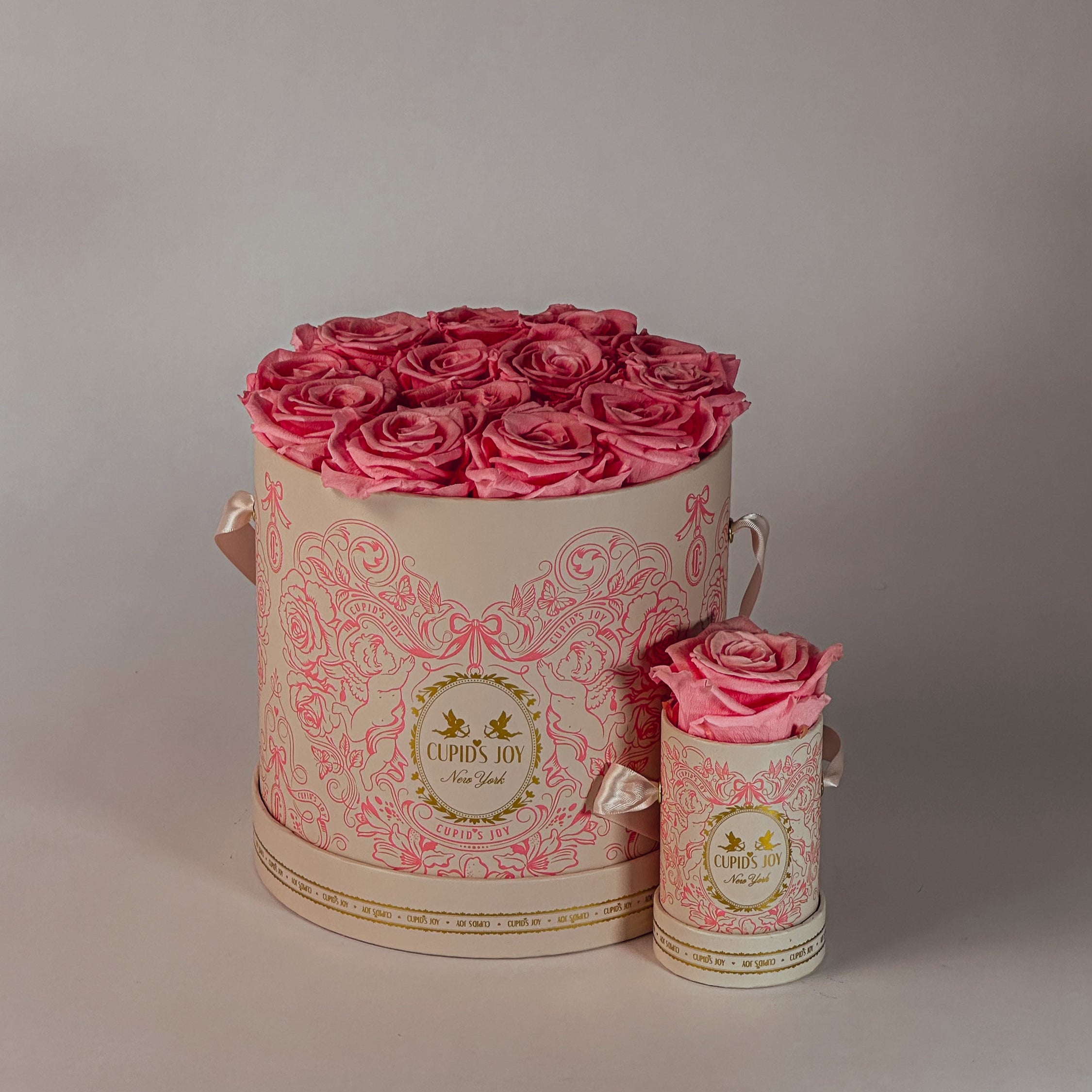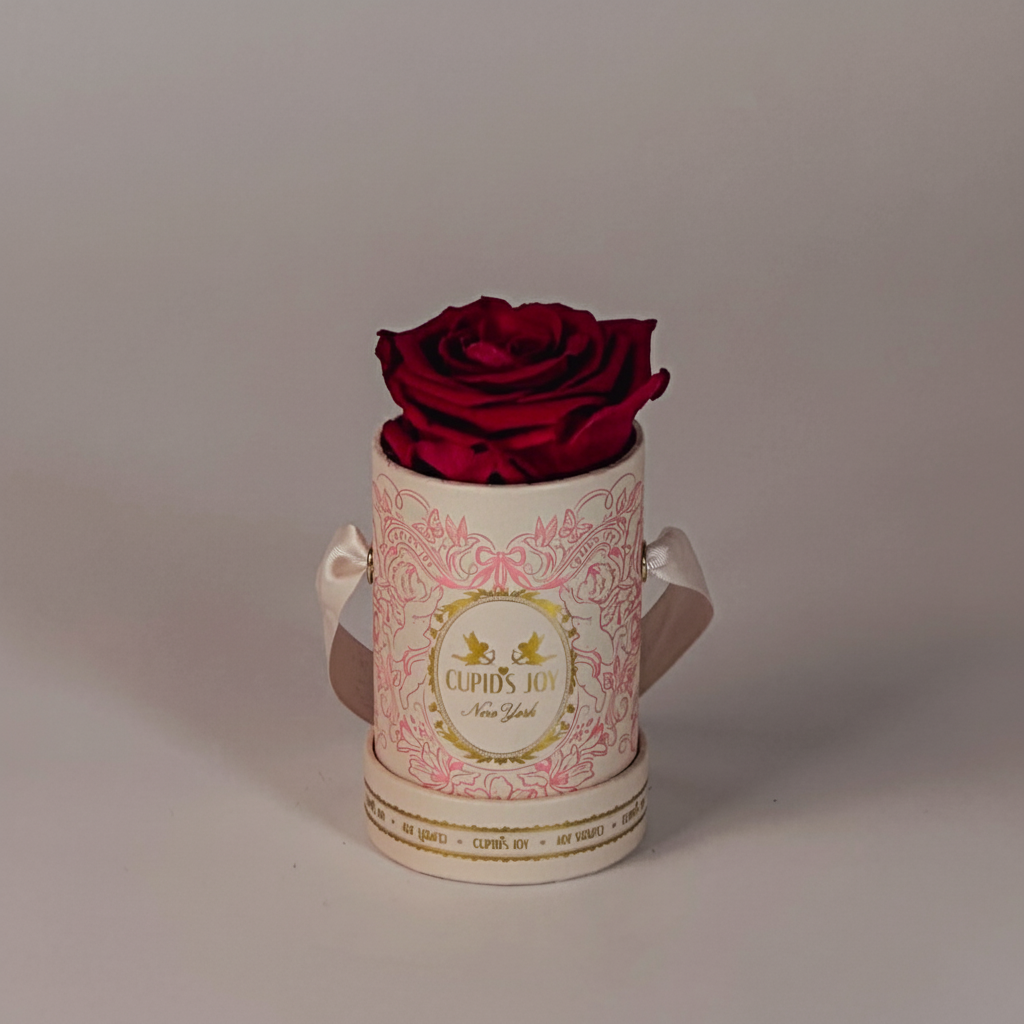
The History of Roses — From Ancient Petals to Eternal Beauty
A Scholarly and Artful Perspective by Cupid’s Joy
Among the flowers that have graced human history, none have carried as much beauty, symbolism, and permanence as the rose. For over thirty-five million years, roses have flourished in the wild — long before the rise of civilization. Their lineage stretches across continents and cultures, from the icy edges of Alaska to the temperate valleys of Persia. But it was humanity that transformed this simple bloom into a vessel of meaning.
Across the centuries, the rose has come to embody nearly every emotion that defines the human condition: love and loss, purity and desire, secrecy and power. Its petals have crowned kings, perfumed palaces, and adorned altars; its image has inspired poets, painters, and saints. To trace the rose through history is to follow civilization’s pursuit of beauty itself — from ancient gardens to the refined artistry of Cupid’s Joy preserved roses, where nature’s most perfect form is rendered timeless.
Roses in the Ancient World — The Flower of Gods and Empires
The first cultivated roses emerged in Asia Minor and the Middle East, where wild varieties were gathered for their fragrance and medicine. In Mesopotamia, the rose was associated with Ishtar, the goddess of fertility and love. In ancient Egypt, it adorned tombs and temples; legend tells that Cleopatra herself ordered her chambers carpeted with rose petals so that when Mark Antony first entered, the scent would forever recall her presence.
The Greeks, captivated by its perfection, wove the rose into their myths. According to legend, Aphrodite — goddess of love — created the flower from the tears and blood shed for her beloved Adonis. The Romans later adopted both the goddess and her bloom, renaming her Venus and enshrining the rose as the emblem of beauty and passion. Pliny the Elder, in his Natural History, recorded that Roman generals returning victorious were showered with petals as symbols of honor.
Roses were also a commodity of luxury and ritual. They perfumed Roman banquets, were pressed into unguents, and even infused into wine — believed to protect against drunkenness. In domestic spaces, ceilings were often decorated sub rosa (“beneath the rose”), a mark of confidentiality: what was said under the rose was to remain secret.
Through these traditions, the rose became more than a flower; it was an icon — sensual yet sacred, ephemeral yet eternal.
The Medieval Rose — Faith, Devotion, and Rebirth
After the fall of the Roman Empire, Europe entered a time of turbulence. Many formal gardens disappeared, their beauty sacrificed to survival. Yet the rose endured, nurtured by those who found solace in its purity — the monks who tended cloister gardens across the continent.
Charlemagne, King of the Franks (742–814 CE), famously ordered roses planted in the royal gardens of Aix-la-Chapelle, not for luxury, but for healing. The monastic apothecaries preserved them for their medicinal and symbolic value, crafting rosewater for the ill and rose oil for the soul.
In this era, the rose transcended its pagan origins to become a Christian emblem. The white rose came to represent the Virgin Mary — the “Rosa Mystica,” or mystical rose — while the red rose symbolized the blood of Christ and divine love. In stained glass and illuminated manuscripts, its circular form became a symbol of heaven itself.
Thus, from decay arose devotion. The medieval rose was not one of decadence, but of rebirth — an emblem of hope cultivated in the quiet corners of faith.
The Roses of England — Power, Passion, and Unity

Nowhere in history has the rose been more politically charged than in 15th-century England. During the Wars of the Roses (1455–1487), two noble houses fought for the crown: the House of Lancaster, whose emblem was the red rose, and the House of York, whose banner bore the white.

The struggle between them was both brutal and symbolic — red for passion, power, and sacrifice; white for purity, loyalty, and peace. When Henry Tudor defeated Richard III at Bosworth Field, he united the rival houses through marriage to Elizabeth of York. From this union emerged the Tudor Rose — red layered upon white — a symbol of reconciliation and enduring harmony.

To this day, the Tudor Rose remains England’s national flower, a living emblem of unity born from division. Its dual tones — light and dark, peace and passion — continue to echo in the artistry of Cupid’s Joy preserved roses, where color itself becomes language: ivory and blush for serenity, crimson for devotion, and rose-gold for balance.
The Renaissance and Beyond — The Cult of the Rose
The Renaissance restored the rose to its place of honor in art and science alike. In the courts of Florence and Versailles, it became both a motif and a metaphor — celebrated by poets, painted by Botticelli and Rubens, and cultivated in elaborate gardens designed for leisure and contemplation.
By the 17th century, European botanists began to classify roses scientifically, leading to the first formal hybridization. The bloom became an object of study as well as of love. Nobles exchanged rare cultivars as gifts of diplomacy, and explorers carried new species from Asia, enriching European collections.
The rose thus entered the modern age not only as a flower of affection, but as an emblem of refinement, discipline, and culture.
The Modern Rose — From the Garden to the Globe
The 19th century marked a revolution in horticulture. In 1867, French breeder Jean-Baptiste Guillot unveiled a new variety — La France — the world’s first hybrid tea rose. With its silvery-pink petals and rich fragrance, La France embodied both the elegance of old roses and the vigor of new breeds. It became the progenitor of over ten thousand hybrid varieties that would follow.
The modern rose was born — cultivated for beauty, symmetry, and resilience. No longer the preserve of royalty, it became the universal language of love. By the 20th century, roses adorned every aspect of culture: from haute couture embroidery to porcelain, from the fragrance of Chanel No. 5 to the petals scattered in films and poetry.
Yet as their popularity soared, so too did the desire for permanence — to capture, preserve, and honor their perfection beyond the brief span of bloom.
Roses in Myth and Symbol
The rose has always existed at the intersection of love and loss, beauty and transience. In mythology, when Cupid was stung by a bee and scattered his arrows among the roses, it was said that their thorns grew in defense. When Venus pricked her foot upon one and her blood stained the petals, the red rose was born.
These legends endure because they mirror the human heart itself — capable of tenderness and pain, perfection and imperfection. The rose’s beauty lies not in its fragility, but in its defiance of time.
The Rose in Art, Literature, and Design
From the Persian poets of Shiraz to the sonnets of Shakespeare, the rose has been the muse of artists and dreamers for millennia. It has symbolized secrecy (“sub rosa”), purity, rebellion, and romantic devotion.
In the visual arts, it became a study of symmetry and light. Painters rendered it as both botanical subject and spiritual metaphor; architects modeled rose windows in cathedrals to capture divine geometry. In fashion and design, it evolved into a recurring motif — the embroidered rose of Dior, the rose-shaped jewels of Cartier, the petal-shaped glasswork of Lalique.
Across all mediums, the rose transcends trend. It is beauty distilled — an ideal humanity refuses to let fade.
The Rose Reimagined — From Fleeting Bloom to Forever Beauty
In modern times, technology and artistry have converged to preserve what nature made ephemeral. Preserved roses, such as those crafted by Cupid’s Joy, represent the culmination of centuries of fascination — the scientific mastery of preservation paired with the poetry of the past.
Each Cupid’s Joy preserved rose begins as a natural bloom, harvested from Ecuador’s volcanic valleys, where altitude and light yield unparalleled depth of color. Through an intricate preservation process, each rose retains its texture and form indefinitely — no water, no sunlight, no decay.
They are not mere replicas of nature, but an evolution of it — the same beauty that once perfumed Cleopatra’s halls and adorned Tudor crowns, now made eternal.
The preservation of roses is more than an achievement of craft; it is an act of reverence. It answers humanity’s ancient longing: to hold on to what is fleeting, to make beauty last.
The Rose and the Art of Perfume — A Legacy of Scent
Even when unseen, the rose has always been present in the air itself. From the attars of Persia to the perfumes of Paris, rose essence has been distilled, bottled, and worn as a second skin.
In the 20th century, perfumers such as Ernest Beaux and François Demachy turned rose oil into luxury’s most recognizable note — the heart of Chanel, Dior, and countless modern fragrances. Each drop carries history: fields of Rosa centifolia in Grasse, Rosa damascena in Bulgaria, their scent woven into couture and memory alike.
This olfactory legacy continues in Cupid’s Joy’s preserved roses, whose subtle, natural fragrance lingers long after bloom. It is not just a scent but an atmosphere — timeless, quiet, unmistakably refined.
From Ancient Petals to Eternal Beauty
The story of the rose is, in truth, the story of civilization’s desire to preserve beauty against time. From temples of Isis to the gardens of Versailles, from English battlefields to Ecuadorian farms, its journey has been one of transformation and continuity.
The rose has been myth and medicine, devotion and desire, politics and poetry — and now, through preservation, it becomes art.
In Cupid’s Joy preserved roses, that lineage finds its modern expression: the eternal made tangible, the ancient made new. Each preserved flower is a meditation on impermanence — a reminder that even the briefest beauty can be made to last.
As long as there are roses, there will be stories. And as long as there are artisans to preserve them, there will be the promise of eternity.
Read more:
